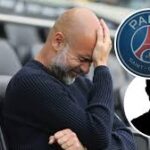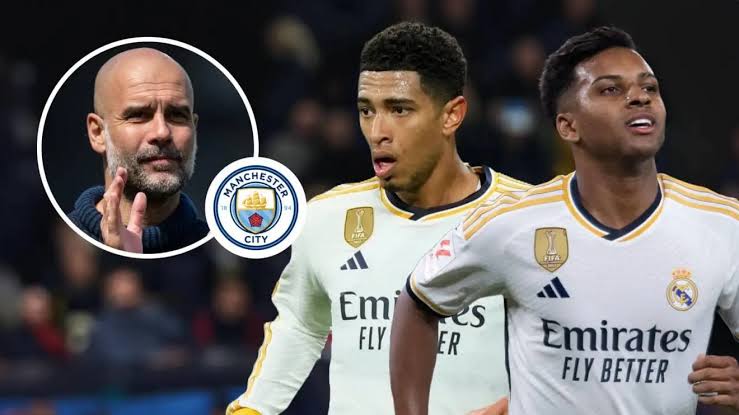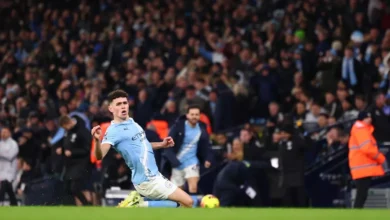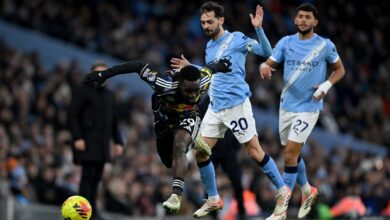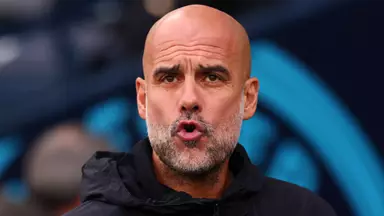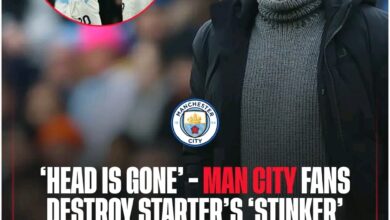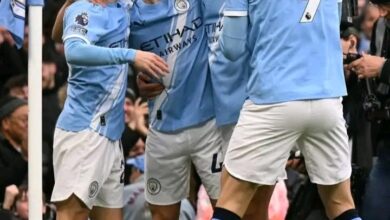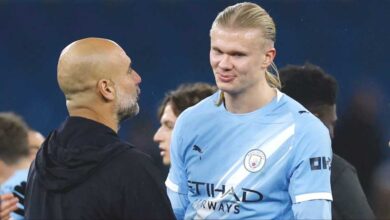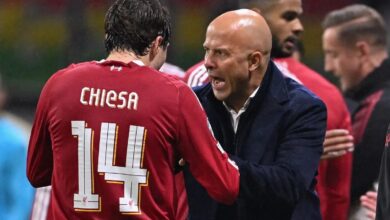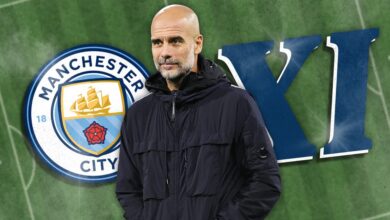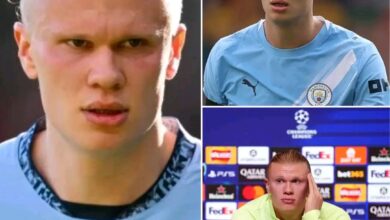Real Madrid Transfer News Roundup: Los Blancos eyeing Arsenal ace, Manchester City want Andriy Lunin, and more
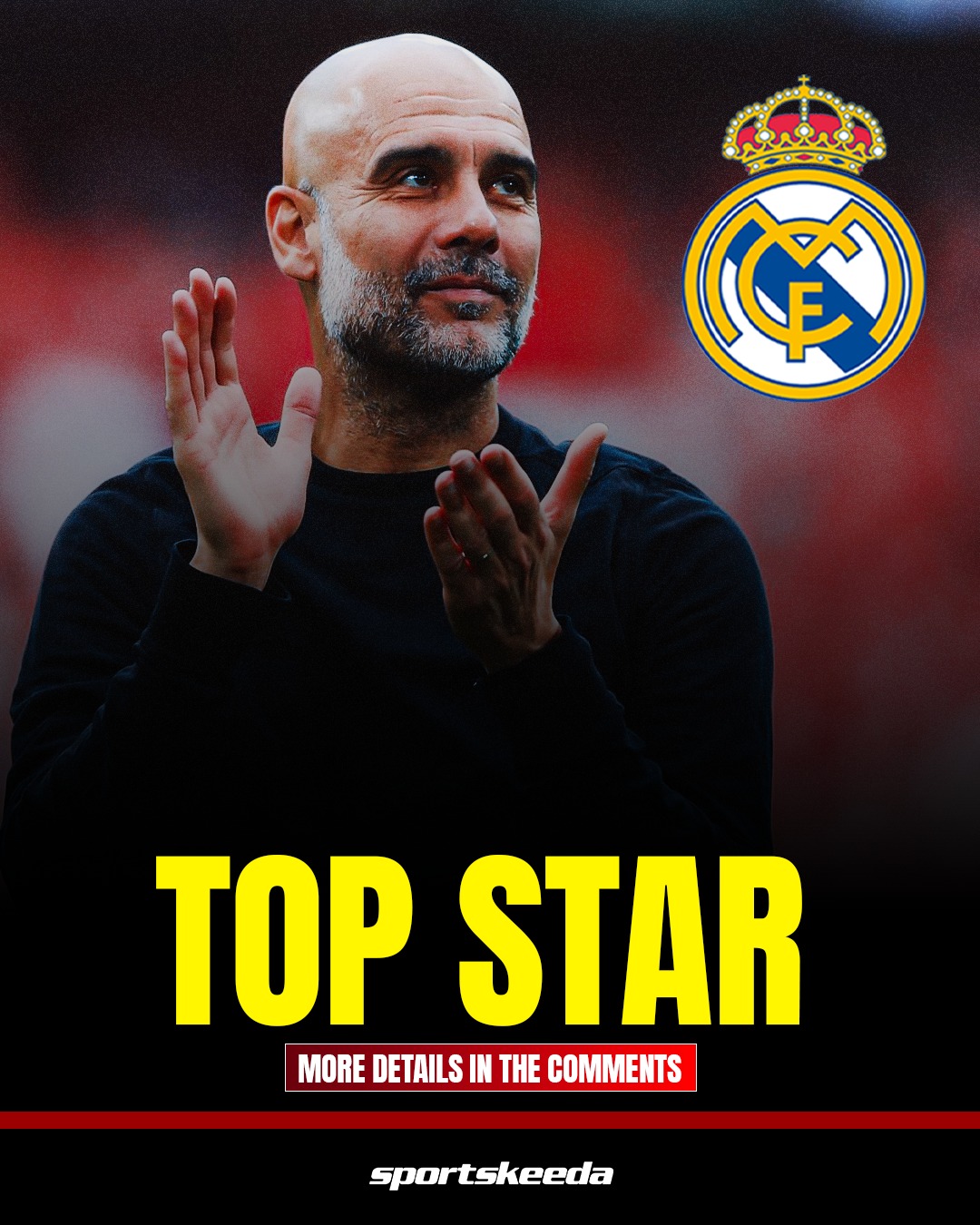
Real Madrid’s summer transfer activities continue to capture global attention as the reigning Champions League winners navigate a complex web of incoming and outgoing player movements. With the 2025 transfer window in full swing, Los Blancos are strategically positioning themselves for continued domestic and European success while managing their squad depth and financial obligations. The club’s approach reflects both immediate tactical needs and long-term planning, as they seek to maintain their position at the pinnacle of world football while developing young talent and securing strategic reinforcements.
Defensive Reinforcement: The Loic Bade Pursuit
Real Madrid’s interest in Sevilla’s French center-back Loic Bade represents a calculated approach to strengthening their defensive options without breaking the bank. The 24-year-old defender has emerged as one of La Liga’s most consistent performers, combining physical presence with technical ability that aligns perfectly with modern football’s demands on central defenders.
Bade’s journey to prominence began in France’s lower divisions before his move to Rennes and subsequent transfer to Sevilla. His adaptation to Spanish football has been remarkable, demonstrating the tactical intelligence and positional awareness that Real Madrid values in their defensive recruits. Standing at 6’4″, Bade offers the aerial presence that could complement Real Madrid’s existing defensive structure while providing additional options in both defensive and offensive set-piece situations.
The financial dynamics of a potential Bade acquisition present both opportunities and challenges. His contract with Sevilla runs until 2029, providing the Andalusian club with significant leverage in any negotiations. However, Real Madrid’s established relationship with Sevilla and their history of successful transfers between the clubs could facilitate discussions.
Sevilla’s financial situation adds complexity to the potential deal. The club’s need to balance their books while maintaining competitive standards creates circumstances where strategic player sales might become necessary. For Real Madrid, this presents an opportunity to secure a quality defender at a potentially favorable price, especially given their reputation for maximizing value in transfer negotiations.
Bade’s La Liga experience eliminates the adaptation period typically required for international transfers. His familiarity with Spanish football’s tactical nuances, refereeing standards, and competitive intensity means he could integrate seamlessly into Carlo Ancelotti’s tactical framework. This immediate readiness represents significant value, particularly given Real Madrid’s need for squad depth across multiple competitions.
The strategic implications of signing Bade extend beyond immediate tactical needs. His age profile aligns with Real Madrid’s preference for players who can contribute immediately while offering long-term value. At 24, Bade represents the ideal combination of experience and potential development, fitting the club’s model of securing players before they reach peak market value.
Goalkeeping Dilemma: Lunin’s Future and Premier League Interest
The situation surrounding Andriy Lunin epitomizes the complex dynamics facing backup goalkeepers at elite clubs. The Ukrainian international has proven his capability during opportunities with Real Madrid, demonstrating shot-stopping ability and distribution skills that align with modern goalkeeping requirements. However, his role as understudy to Thibaut Courtois limits his regular playing time and potentially impacts his international career prospects.
Newcastle United and Manchester United’s reported interest in Lunin reflects the Premier League’s continued attraction to proven talent from Europe’s elite clubs. Both English clubs recognize the challenge of finding reliable goalkeeping options and view Lunin as a solution to their respective needs.
Newcastle’s interest stems from their need to establish long-term stability in goal following their recent ascension to European competition. The Magpies require a goalkeeper capable of handling both Premier League intensity and continental football’s tactical demands. Lunin’s Champions League experience with Real Madrid provides exactly this combination of domestic and international pedigree.
Manchester United’s potential pursuit reflects their ongoing goalkeeping evolution under current management. The club’s need for competition and depth in the position makes Lunin an attractive option, particularly given his experience in high-pressure situations and his ability to adapt to different tactical approaches.
From Real Madrid’s perspective, Lunin’s departure would create both challenges and opportunities. Losing a proven backup goalkeeper would necessitate finding a replacement capable of stepping in when required. However, his sale would generate transfer revenue and free up squad space for other positional reinforcements.
The financial considerations surrounding Lunin’s potential move are significant. As a proven goalkeeper with Champions League experience and international credentials, his transfer value reflects both his current ability and future potential. Real Madrid’s investment in developing Lunin during his time at the club means they are well-positioned to recoup substantial value from any sale.
The psychological aspects of Lunin’s situation highlight broader challenges facing talented players in supporting roles at elite clubs. His development and professional satisfaction must be balanced against Real Madrid’s need for reliable backup options. This delicate balance often results in strategic departures that benefit all parties involved.
Youth Development: Jacobo Ramon’s Serie A Adventure
The official transfer of Jacobo Ramon to Como represents Real Madrid’s sophisticated approach to youth development and strategic player management. The 20-year-old defender’s move to Serie A under Cesc Fabregas demonstrates the club’s commitment to ensuring their promising prospects receive appropriate development opportunities.
Ramon’s profile as a technically skilled center-back with strong aerial ability aligns with modern defensive requirements. His development through Real Madrid’s youth system, including time with both the senior squad and Castilla, has prepared him for the challenge of professional football at the highest level.
The structure of Ramon’s transfer to Como mirrors the arrangement made for Nico Paz, reflecting Real Madrid’s standardized approach to managing promising youth prospects. The 50% sell-on clause ensures that Los Blancos retain significant financial interest in Ramon’s future development while allowing him the opportunity to establish himself in top-level football.
Como’s project under Cesc Fabregas presents an ideal environment for Ramon’s continued development. The Spanish coach’s understanding of technical football and his experience working with young players creates optimal conditions for Ramon to refine his skills and adapt to Serie A’s tactical demands.
The strategic value of such arrangements extends beyond individual player development. By maintaining financial stakes in departed youth prospects, Real Madrid creates multiple revenue streams while building relationships with clubs across Europe. This network of connections often facilitates future transfer negotiations and provides opportunities for strategic partnerships.
Serie A’s reputation as a defensively sophisticated league offers Ramon valuable learning opportunities. The tactical complexity and emphasis on positional awareness in Italian football will challenge him to develop aspects of his game that might not be tested in other environments.
Mourinho’s Ambitious Fenerbahce Project
Jose Mourinho’s reported interest in securing a Real Madrid star for Fenerbahce adds intrigue to the Turkish club’s ambitious summer recruitment strategy. The Portuguese coach’s connection to Real Madrid through his successful tenure as manager provides unique insights into player capabilities and potential fit within different tactical systems.
Mourinho’s arrival at Fenerbahce has elevated the Turkish Super Lig’s profile and created opportunities to attract high-profile players who might not otherwise consider the league. His reputation and tactical acumen provide compelling arguments for players seeking new challenges or looking to revitalize their careers under proven management.
The financial dynamics of Turkish football have evolved significantly in recent years, with clubs increasingly willing to invest substantial resources in player acquisitions. Fenerbahce’s reported willingness to “splash out” on signings demonstrates their commitment to competing at higher levels both domestically and in European competitions.
From Real Madrid’s perspective, any potential deal with Fenerbahce would need to align with their strategic objectives. The club’s relationship with Mourinho, despite the eventual conclusion of his tenure, remains professionally respectful, potentially facilitating negotiations if mutual benefits can be identified.
The psychological appeal of working with Mourinho again could influence player decisions, particularly for those seeking guaranteed playing time or tactical development under one of football’s most successful coaches. His track record of maximizing player potential and achieving success across different leagues adds credibility to Fenerbahce’s ambitious project.
Financial Strategy: The Miguel Gutierrez Sell-On Clause
Real Madrid’s potential windfall from Miguel Gutierrez’s reported move to Napoli exemplifies the club’s sophisticated approach to contract structuring and long-term financial planning. The left-back’s journey from Real Madrid’s academy to Girona and potentially to Serie A demonstrates how strategic player development can generate multiple revenue streams.
The 50% sell-on clause in Gutierrez’s Girona contract represents astute business planning by Real Madrid’s management team. Such clauses have become increasingly common in modern football, allowing selling clubs to benefit from players’ continued development and market value appreciation.
Gutierrez’s development at Girona has been remarkable, establishing himself as one of La Liga’s most promising young defenders. His pace, crossing ability, and tactical awareness have attracted attention from across Europe, with Napoli’s reported interest reflecting his growing reputation.
The potential €10 million income from Gutierrez’s sale would provide Real Madrid with valuable transfer funds while validating their youth development strategies. Such revenue streams contribute significantly to the club’s ability to pursue other transfer targets and maintain financial flexibility.
Napoli’s interest in Gutierrez aligns with their tactical evolution under current management. The Italian club’s need for dynamic full-backs who can contribute effectively in both defensive and attacking phases makes Gutierrez an logical target.
The broader implications of successful sell-on clauses extend beyond immediate financial benefits. They demonstrate Real Madrid’s ability to identify and develop talent, enhancing their reputation among young players and their families when making academy decisions.
Strategic Squad Planning and Tactical Evolution
Real Madrid’s transfer activities reflect broader strategic planning under Carlo Ancelotti’s management and Florentino Perez’s presidential vision. The club’s approach balances immediate competitive needs with long-term sustainability, ensuring continued success across multiple competitions while managing financial resources effectively.
The pursuit of defensive reinforcement through players like Bade addresses specific tactical needs identified during the previous season. Ancelotti’s tactical system requires defenders capable of initiating attacks from deep positions while maintaining defensive solidity against varied attacking approaches.
Squad depth management remains crucial for Real Madrid’s multi-competition schedule. The club’s participation in domestic leagues, cup competitions, and European tournaments demands quality options across all positions. Strategic signings like Bade would provide tactical flexibility and injury insurance throughout demanding campaigns.
The financial implications of current transfer activities must be considered within Real Madrid’s broader budgetary framework. The club’s substantial revenue streams from commercial partnerships, matchday income, and broadcast rights provide foundations for strategic investment while maintaining financial fair play compliance.
Competitive Landscape and Market Dynamics
Real Madrid’s transfer activities occur within an increasingly competitive European market, where clubs across multiple leagues compete for similar player profiles. The Premier League’s financial advantages, Serie A’s tactical sophistication, and Bundesliga’s development reputation create complex dynamics affecting player valuations and transfer feasibility.
The specific interest from Newcastle and Manchester United in Lunin reflects broader Premier League trends toward securing proven talent from Europe’s elite clubs. English clubs’ financial resources and competitive environments make them attractive destinations for players seeking career advancement or new challenges.
Serie A’s continued appeal, demonstrated by Ramon’s move to Como and potential Gutierrez interest from Napoli, reflects the league’s reputation for tactical development and technical football. Italian clubs’ historical success in developing defenders makes them logical destinations for promising defensive talents.
Long-Term Vision and Succession Planning
Real Madrid’s current transfer strategy reflects long-term vision extending beyond immediate competitive needs. The club’s approach to managing aging squad members, developing youth prospects, and identifying strategic reinforcements demonstrates sophisticated planning for sustained success.
The balance between experienced players and emerging talents requires careful management to ensure continued competitiveness while preparing for future transitions. Strategic signings like Bade would provide immediate impact while offering long-term value as squad cornerstones.
Youth development initiatives, exemplified by Ramon’s structured departure to Como, demonstrate Real Madrid’s commitment to nurturing talent while ensuring optimal development pathways. Such approaches build the club’s reputation among young players and their representatives, facilitating future recruitment efforts.
Financial Fair Play and Regulatory Considerations
Modern transfer activities must consider increasingly complex regulatory environments, including Financial Fair Play requirements and domestic league regulations. Real Madrid’s approach to transfer structuring, including sell-on clauses and strategic departures, reflects understanding of these regulatory frameworks.
The club’s substantial revenue generation provides advantages in regulatory compliance while enabling strategic investment in squad improvement. However, careful management remains essential to maintain compliance while pursuing competitive objectives across multiple competitions.
Conclusion: Strategic Excellence in Transfer Management
Real Madrid’s summer transfer activities demonstrate the sophisticated planning and strategic thinking that characterizes elite football management in the modern era. The club’s approach balances immediate tactical needs with long-term financial sustainability while maintaining their position at the forefront of global football.
The potential acquisition of players like Bade addresses specific squad needs while representing sound financial planning. The management of existing assets, including decisions regarding Lunin and the structured development of youth prospects like Ramon, showcases comprehensive squad management.
The financial benefits derived from strategic contract clauses, exemplified by the potential Gutierrez windfall, demonstrate how careful planning can create multiple revenue streams while supporting overall transfer strategies.
As the transfer window continues, Real Madrid’s activities will undoubtedly generate further speculation and analysis. However, the foundations for continued success appear firmly established, with strategic planning and financial prudence combining to maintain the club’s position among football’s elite institutions.
The coming weeks will likely bring resolution to several ongoing transfer sagas while potentially introducing new developments. Real Madrid’s proven ability to navigate complex transfer markets while maintaining competitive excellence suggests that whatever decisions emerge will serve the club’s long-term interests and competitive ambitions.
The broader implications of Real Madrid’s transfer strategy extend beyond individual player movements to encompass squad philosophy, financial management, and competitive positioning. As European football continues to evolve, Real Madrid’s approach provides a template for sustained excellence in an increasingly complex and competitive environment.

